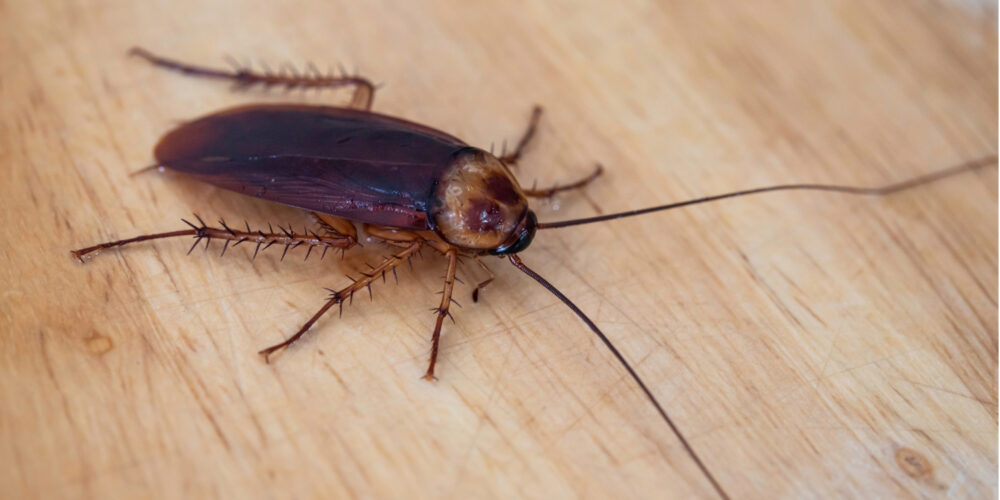Different cockroaches require different approaches or their population can quickly snowball. Here’s the most common species of Cockroaches we see in Southern Utah:
1. American Cockroach
- Appearance: Large (up to 2 inches), reddish-brown with a yellow band behind the head
- Behavior: Prefers warm, moist areas like basements, drains, and sewers, also called “Palmetto bugs”
- Risks: Can carry bacteria and contaminate surfaces and food
2. Oriental Cockroach
- Appearance: Dark brown to black, shiny, about 1 inch long
- Behavior: Often found in damp, cool places like crawlspaces, floor drains, and under sinks, also called “water bugs”
- Risks: Known for their strong odor and ability to spread filth
3. Turkestan Cockroach
- Appearance: Males are light brown with wings; females are darker and wingless
- Behavior: Outdoor dwellers often found in leaf litter, mulch, or around foundations
- Risk: Increasingly common in the southwestern U.S., often invades garages and basements, can carry bacteria and contaminate surfaces and food
4. German Cockroach
- Appearance: Light brown or tan with two dark stripes behind the head
- Behavior: Prefers indoor environments, especially kitchens and bathrooms. One female can produce 200-300 offspring in a year, with her offspring breeding as well that one female could produce up to 300,000 roaches in a year.
- Risks: Reproduce rapidly, contaminate food, trigger asthma/allergies
- Note: Practically impossible to eliminate without professional service/expertise
5. Asian Cockroach
- Appearance: Nearly identical to German cockroaches, light brown with two dark stripes behind the head; key difference is their strong flying ability
- Behavior: Attracted to light and often found outdoors in mulch, leaf litter, and lawns, but may fly indoors at night; unlike German roaches, they prefer the outdoors
- Risks: Often mistaken for German roaches, leading to misidentification; while less likely to infest indoors, they can still contaminate food and surfaces if they enter homes
- Note: Proper identification is essential. Treatment differs significantly from German cockroach infestations
Why Cockroaches Are Dangerous
- Health Hazards: Roaches spread bacteria like salmonella and E. coli
- Trigger Allergies: Their droppings and shed skin can trigger asthma, especially in children
- Contaminate Food & Surfaces: Roaches crawl through trash and sewers before entering your home
- Rapid Breeders: Some species (like German roaches) multiply extremely fast, in common cases by the hundreds or thousands each week.
- Hard to Eradicate Alone: DIY methods rarely reach nesting sites or breeding grounds
Our Roach Control Method: Targeted, Safe, and Effective
Our Process:
- Inspection: Identify species, nesting areas, and entry points
- Gel Bait & Insect Growth Regulators (IGRs): Roaches carry bait back to the nest, spreading it through the colony. IGR’s act as a “bug birth control” and limit reproduction of roaches and prevent colony growth
- Crack & Crevice Treatments: Apply safe, targeted insecticides where roaches travel and hide
- Proper Flush Out: Inject product directly into wall voids to clean out hidden nests
- Monitoring: Track cockroach activity and adjust accordingly
- Sanitation & Prevention Guidance: Help you keep roaches out for good
Why Our Approach Works:
- No Bombing or Over-Spraying: Our methods are clean, measured, and non-disruptive
- Safe for Pets & Families: Treatments are low-odor and environmentally conscious. You and your family don’t have to leave the home during treatments.
- Effective on All Species: We use different products and tactics based on the species we’re targeting

